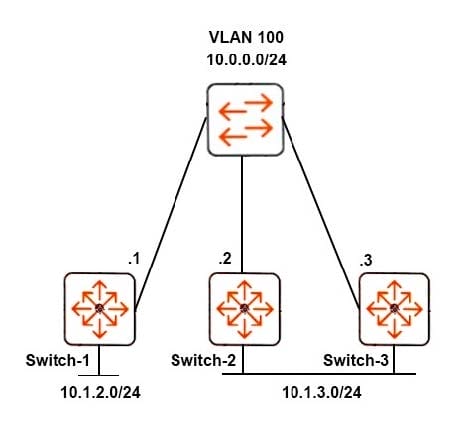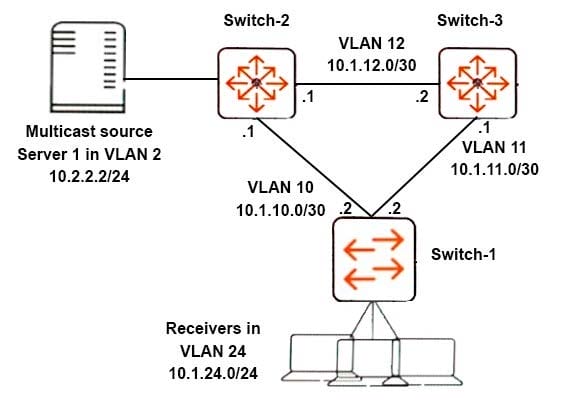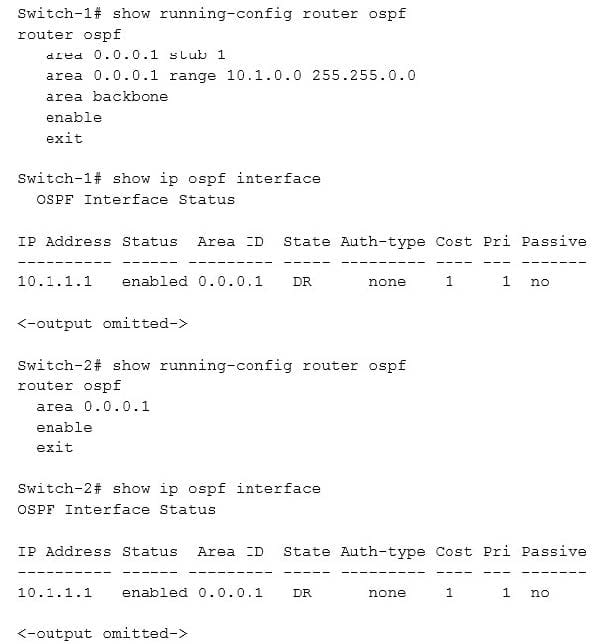Exam Details
Exam Code
:HPE6-A45Exam Name
:Implementing Aruba Campus Switching solutionsCertification
:HP CertificationsVendor
:HPTotal Questions
:168 Q&AsLast Updated
:Mar 30, 2025
HP HP Certifications HPE6-A45 Questions & Answers
-
Question 81:
A network administrator needs to configure an AOS-Switch to classify traffic. Comparing QoS policy and global policy, what is one function that only a class-based QoS policy can fulfill?
A. Apply a DSCP to HTTP traffic from some sources but not other sources.
B. Apply a DSCP rather than an 802.1p value to classified traffic.
C. Override the incoming DSCP in the received traffic.
D. Override the DSCP or priority applied directly to an interface.
-
Question 82:
A network administrator sets up MAC-Auth and captive portal to Aruba ClearPass on AOS-Switches. The solution seems to work for most guests. However, some guests open their browsers and are not redirected to the captive portal.
How should the administrator address the likely cause of the issue?
A. Set the RADIUS server time window to 0 because some guest computers likely have the incorrect system time.
B. Replace MAC-Auth on switch ports with Web-Auth because this authentication method offers more reliability with captive portal.
C. Reconfigure the captive portal URL hash key on some of the switches, which likely have the wrong password.
D. Replace expired certificates on the switches and set their usage to captive portal since some guests have an HTTPS homepage.
-
Question 83:
Refer to the exhibit.

The network administrator wants to reduce failover time if a switch link in VLAN 100 goes down.
What should the administrator do?
A. Configure echo mode BFD on VLAN 100 on all OSPF routing devices on VLAN 100.
B. Lower the dead timer on the BDR of VLAN 100.
C. Lower the hello timer only on the BDR of VLAN 100.
D. Configure graceful restart on all of the OSPF routing devices on VLAN 100.
-
Question 84:
Refer to the exhibits. Exhibit 1

Exhibit 2

The IP phone in the exhibit is set up to complete 802.1x authentication to the network.
How can the netwotk administrator prevent a user on the computer from receiving network access without authentication?
A. Set an 802.1X client limit of 2 on interface 1.
B. Set up the MAC filter on interface 1.
C. Enable static mode port security on interface 1.
D. Enable MAC-based VLANs on interface 1.
-
Question 85:
A network uses MSTP and has AOS-Switches at the access layer. The company wants edge ports on the
access layer switches to meet these criteria:
They prevent all rogue switches that run STP, RSTP, or MSTP from connecting to the network.
If a rogue switch connects and is then replaced by a proper endpoint, the port recovers automatically
without IT staff involvement.
How should the network administrator set up the edge ports to meet these requirements?
A. Enable loop protection with a timeout period.
B. Enable BPDU filtering.
C. Enable both root guard and BPDU protection.
D. Enable BPDU protection with a timeout period.
-
Question 86:
Refer to the exhibit.

Network administrators set up PIM-DM to route multicast traffic from Server 1 to clients in VLAN 24. The multicasts are not active now, but the administrators want to determine which path the multicasts will take.
What should the administrators check to help them calculate this path?
A. If Switch-2 or Switch-3 has the highest IP address on a VLAN that runs PIM-DM.
B. If Switch-2 or Switch-3 is listed as an RP in the Switch-1 RP set
C. What the next hop is for the unicast route that Switch-1 uses to reach 10.2.2.2
D. If the Switch-2 DR priority on VLAN 10 is higher than the Switch-3 DR priority on VLAN 11
-
Question 87:
Refer to the exhibit.

An AOS-Switch connects to an unmanaged switch in a meeting room. The exhibit shows security settings for this port. Users report that they sometimes lose connectivity and then get it back.
Which best practice should network administrators follow to avoid issue?
A. The loop protection and port security actions should be set to match.
B. Eavesdrop prevention should be disabled when report security is in limited-continuous mode.
C. Port security and loop protection should not be enabled on the same port.
D. Loop protection should operate in VLAN mode, rather than port mode, when port security is enabled.
-
Question 88:
A network administrator plans to apply DSCP 46 to all traffic on a port. What is required for this configuration to work?
A. The port has trust set to default.
B. A DSCP map that sets 46 to a priority value.
C. The port has trust set to DSCP.
D. A QoS policy selects traffic with DSCP 46.
-
Question 89:
Refer to the exhibit.

Why are these switches unable to achieve adjacency?
A. Switch-1 and Switch-2 use different area types for Area 1.
B. Switch-2 does not support every area that Switch-1 does.
C. The area range is incorrect on Switch-1 and missing on Switch-2.
D. They have the same priority and cannot elect a Designated Router (DR).
-
Question 90:
A company starts to have issues with too many rules in the dynamic ACLs applied to AOS-Switch ports. Administrators decide to remove some of the common rules from the dynamic ACLs and enforce them in an ACL applied to the users' VLAN instead.
What is one rule that administrators should keep in mind to ensure that the new ACLs control traffic as they expect?
A. ACLs applied to VLANs cannot control ICMP traffic, do the dynamic ACLs must include the ICMP rules.
B. Administrators should add an explicit deny at the end of the dynamic ACLs, so traffic will hit VLAN ACL.
C. Traffic must be permitted by both the dynamic ACL and the VLAN ACL in order to be permitted.
D. If a port supports multiple clients, every dynamic ACL applied to one client filters traffic for all clients.
Related Exams:
HP0-D15
Administering HP CloudSystem Matrix SolutionsHP0-D20
Architecting the HP Matrix Operating EnvironmentHP2-E56
Selling HP SMB SolutionsHP2-H88
Selling HP Business Personal Systems Hardware 2019HP2-I14
Selling HP Supplies 2020HP2-I15
Selling HP Business Personal Systems Hardware 2020HP2-I17
Selling HP Printing Hardware 2020HP2-I44
Selling HP Workstations 2022HP2-I73
Selling HP Retail and Hospitality Solutions 2024HP2-N51
HP Application Lifecycle Management 12.x Software
Tips on How to Prepare for the Exams
Nowadays, the certification exams become more and more important and required by more and more enterprises when applying for a job. But how to prepare for the exam effectively? How to prepare for the exam in a short time with less efforts? How to get a ideal result and how to find the most reliable resources? Here on Vcedump.com, you will find all the answers. Vcedump.com provide not only HP exam questions, answers and explanations but also complete assistance on your exam preparation and certification application. If you are confused on your HPE6-A45 exam preparations and HP certification application, do not hesitate to visit our Vcedump.com to find your solutions here.